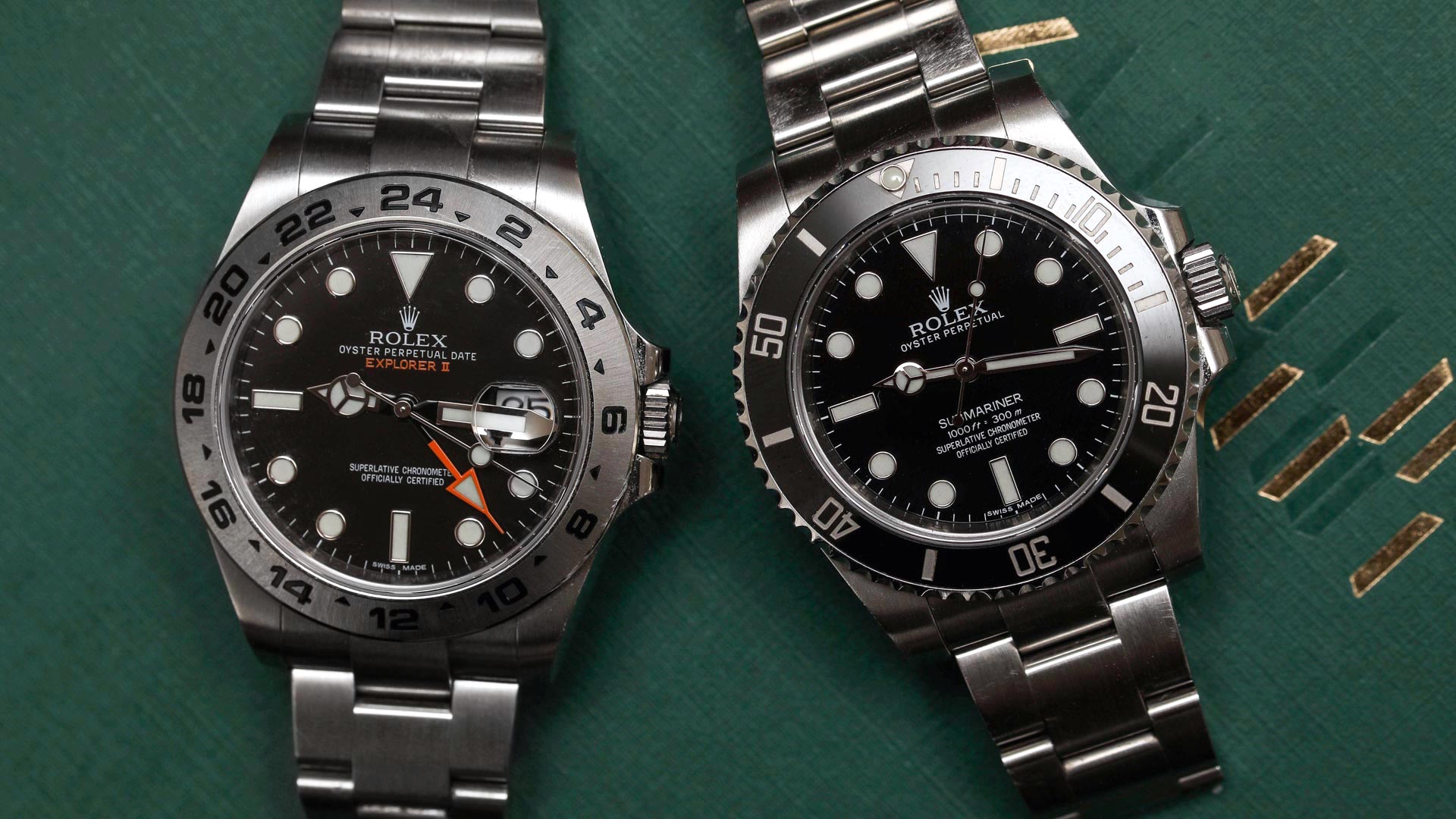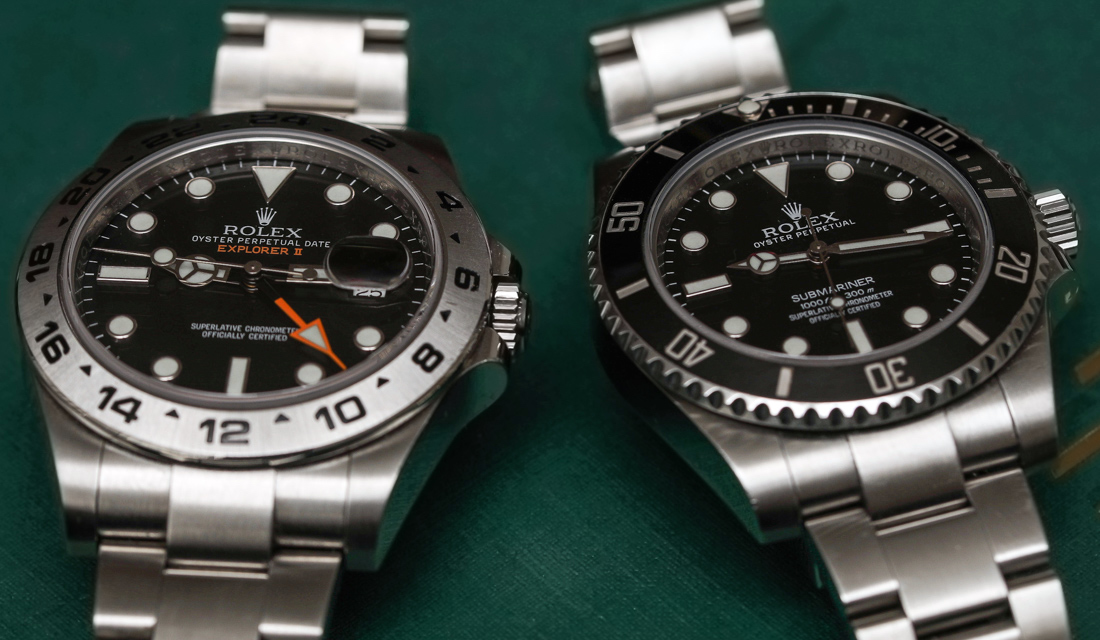
Rolex Submariner & Rolex Explorer II Case & Bezel
To start looking at the cases on these two watches let’s start with the Submariner 114060 which comes in a 40mm wide and 12.5mm thick case measuring 48mm lug to lug. Naturally, it is done in 904L steel (which they call “Oystersteel” as of 2018) with a Cerachrom bezel. The bezel has engraved and recessed numerals and indices, which are done in a PVD-coated platinum. It’s hard to argue with the luster and shimmer that comes with ceramic, though it does add a “fussiness” to a tool watch that I know some are finding a little overdone or “played out” at this point.
We can’t directly compare this feature with the two watches, but the operation of the unidirectional bezel on the Submariner is remarkably smooth and precise with each of the 120 clicks feeling deliberate and receptive.
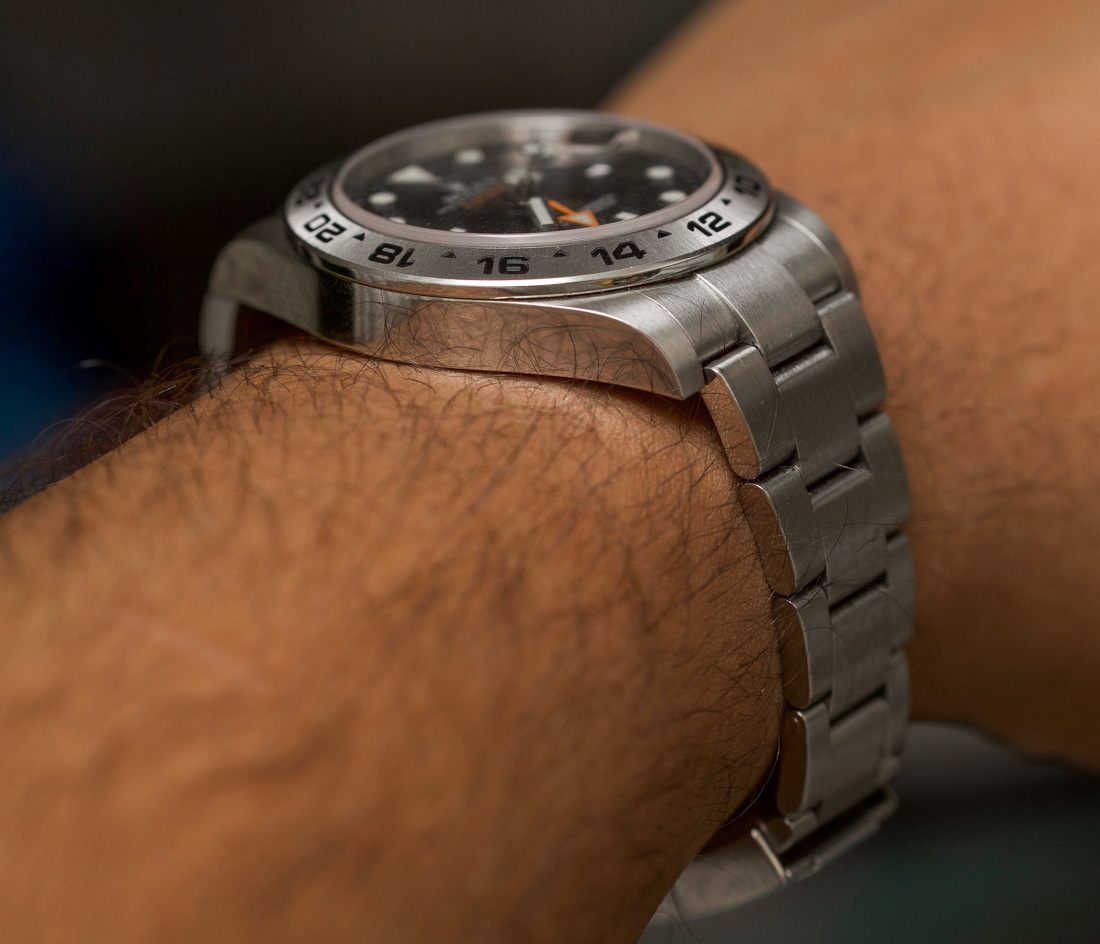
The Explorer II measures 42mm wide and just about 12mm thick and a lug to lug length of just a hair over 50mm. Using the same 904L steel, the finishing on the cases is excellent on both and basically tied. There’s no Cerachrom to be found on the Explorer II, with a fixed 24-hour bezel done in brushed steel with numerals and triangular indices engraved and filled with black enamel paint. I’ve heard some people say that this can fade, though I’ve not had any sign of this occurring on mine. I asked a couple of people who have owned this watch for years and neither of them have experienced any fading, as well.
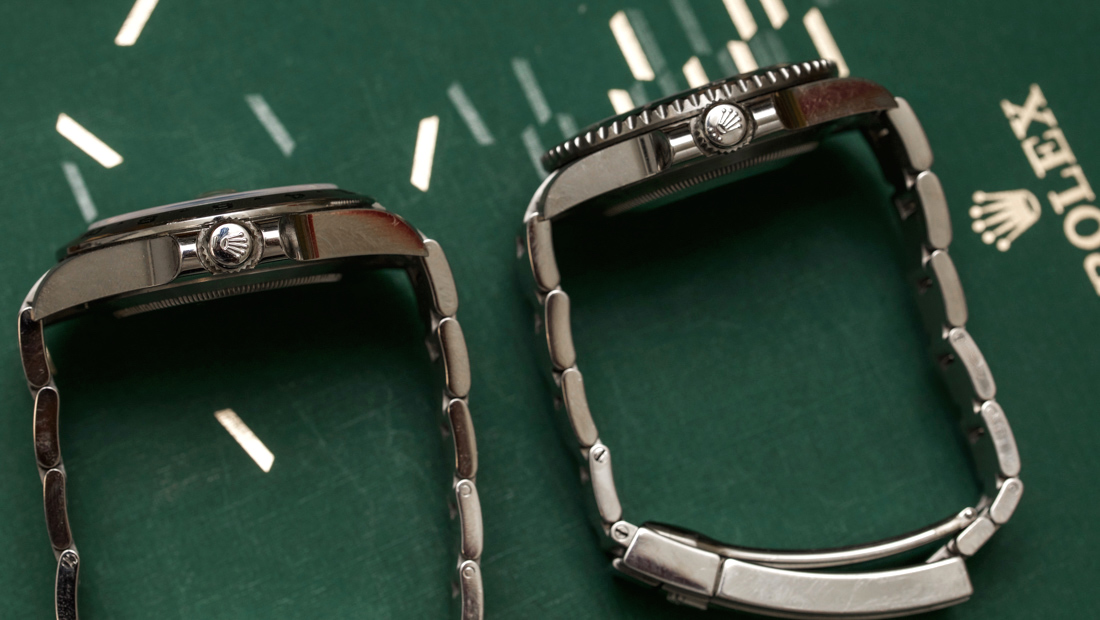
One major difference you’ll find between the Submariner and Explorer II is the crown. On the Submariner you have the superior Triplock “triple water-proofness” crown whereas the Explorer II has the Twinlock “double water-proofness” crown. What this materially results in is a water resistance of 300 meters (1,000 feet) on the Submariner and 100 meters (300 feet) on the Explorer II.
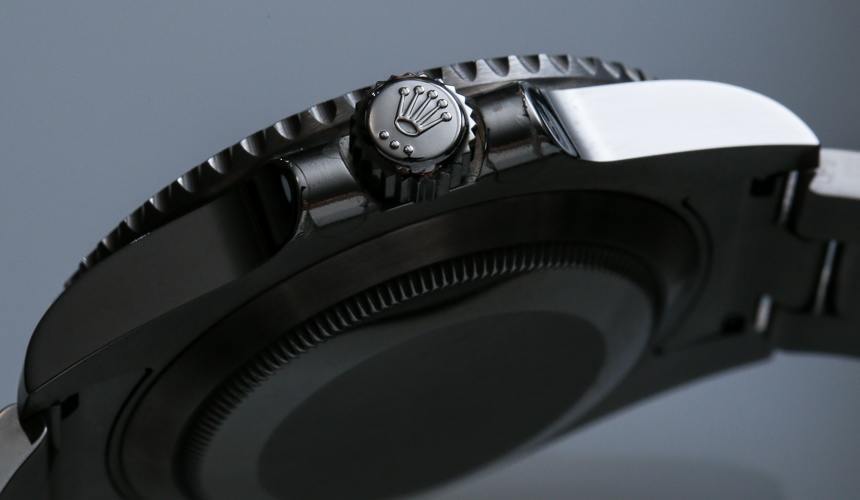
You can identify the Triplock through the three dots under the logo crown, while a Twinlock will have a straight line (or alternatively, two dots) under the logo. The Twinlock system has two rubber sealed zones, one inside the tube and one inside the crown. This is what you find in the “standard” Oyster case watches that have the 100m water resistance. The Triplock crown is Rolex’s waterproofing system used specifically on dive watches. It’s overall larger in size, has four rubber sealed zones, as well as 10 distinct components that work together to create a much more superior waterproof seal.
So, the Submariner is leagues ahead in terms of water resistance. But then again, it’s a dive watch whereas the Explorer II simply isn’t. I have never gone diving with my Explorer II, and I probably never will, so this point becomes moot for me. On the other hand, if you’re into water sports and diving, give the Submariner an advantage here.
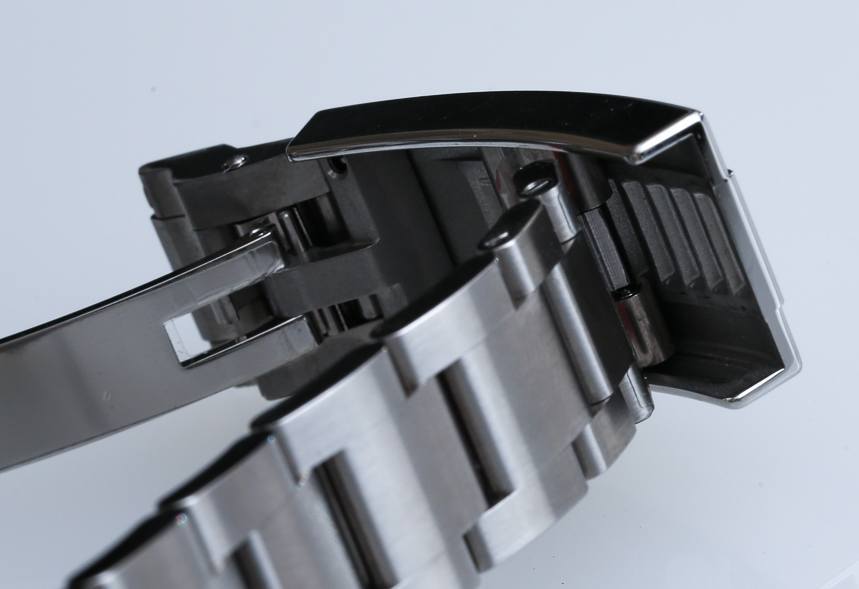
Rolex Submariner & Rolex Explorer II Bracelet & Clasp
Both the Submariner and Explorer II use the lauded Oyster bracelet done in 904L steel with three links. However, the Submariner has the superior Glidelock fine-adjustment extension system. This allows the wearer to adjust the watch in 2mm increments up to a total of 20mm. This is one of the finest adjustable bracelets out there, allowing for easy changes due to weather as well as easily allowing a different wearer to comfortably put on the watch. Of course, the purpose of this adjustment system is to allow someone to easily put the watch on over a diving suit.
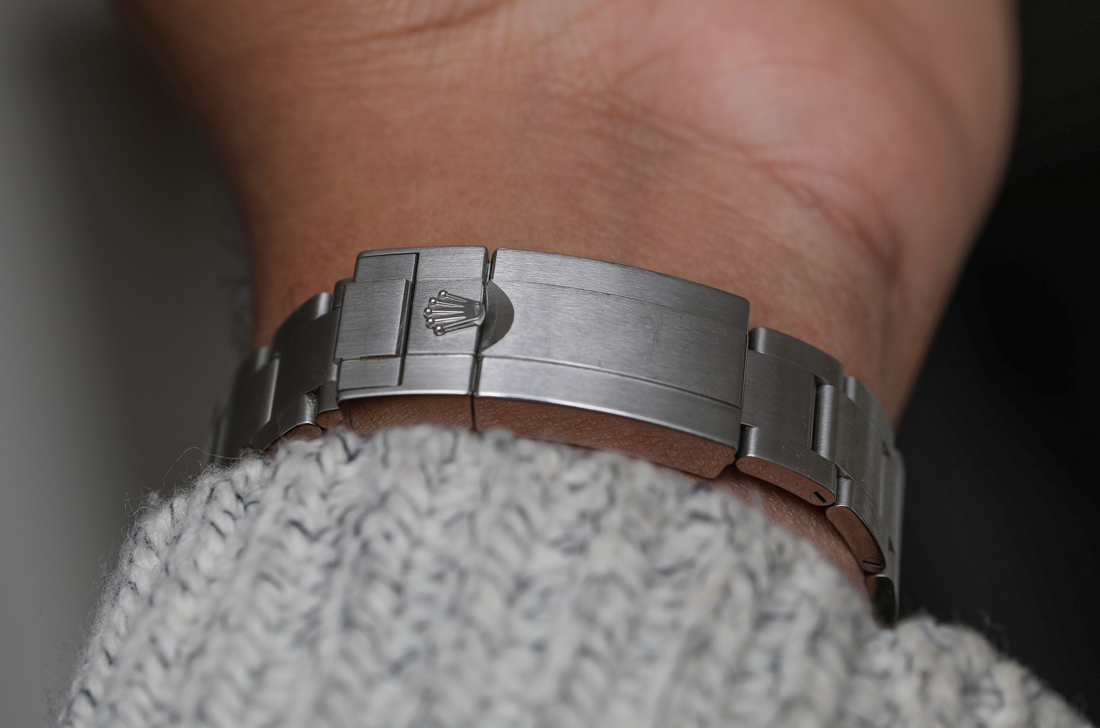
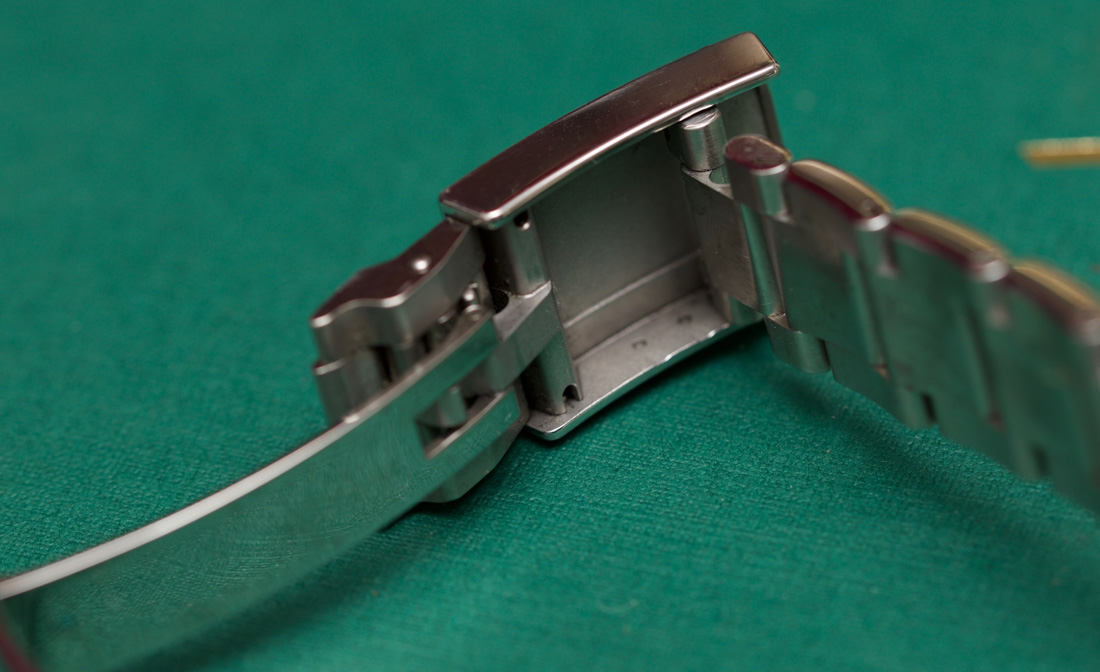
The Explorer II on the other hand uses the Easylink comfort extension link, which utilizes a half link. This can be easily adjusted between the short and long position, allowing for 5mm of give on the watch without the use of a tool. While not as useful as the Glidelock, the Easylink is great to have and I find the long and short positions giving me exactly what I need when it comes to changes in the weather. Both these bracelets have the same classic Oysterlock clasp that anyone who has worn a Rolex sports watch is used to and likely loves.
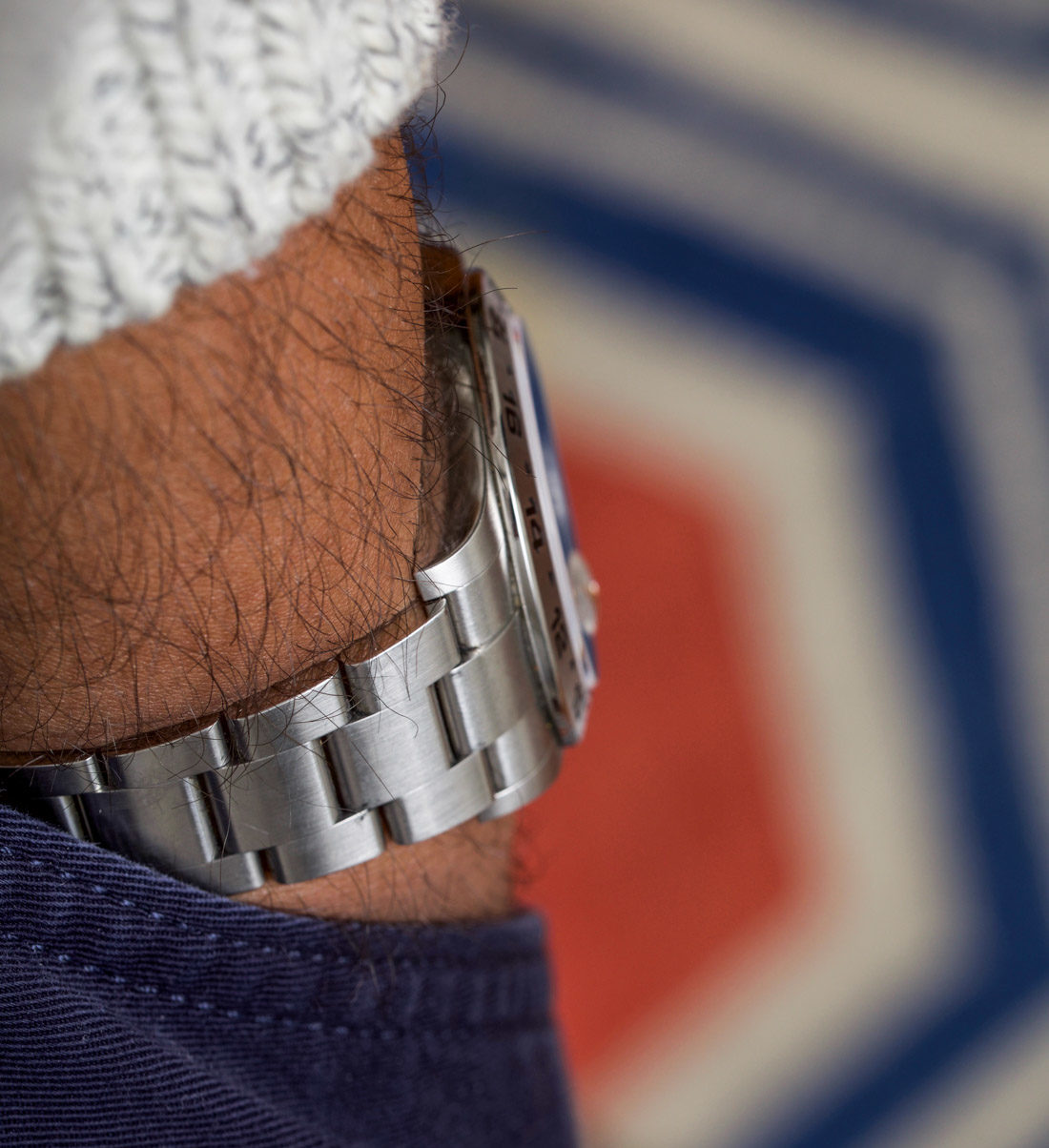
Rolex Submariner & Rolex Explorer II Wearability
Frankly, both of these watches wear comfortably, even with the difference in size. I must say that the Explorer II fits under a sleeve much easier due to the steeper sloped (and overall less overtly sporty) bezel as well as being slightly slimmer on the wrist overall. If size is an issue or the buyer in mind is a woman, the Submariner is definitely going to fit comfortably on a lot more wrists in terms of sheer number of people. I have a 7.5 inch wrist, and I don’t find the case of the larger Explorer II to overcast my wrist and that’s the “golden rule” for me when it comes to the wearability of a watch. You’re going to find this answer to be a little frustrating but try on both of the watches, ideally for a couple of days each before making up your mind.
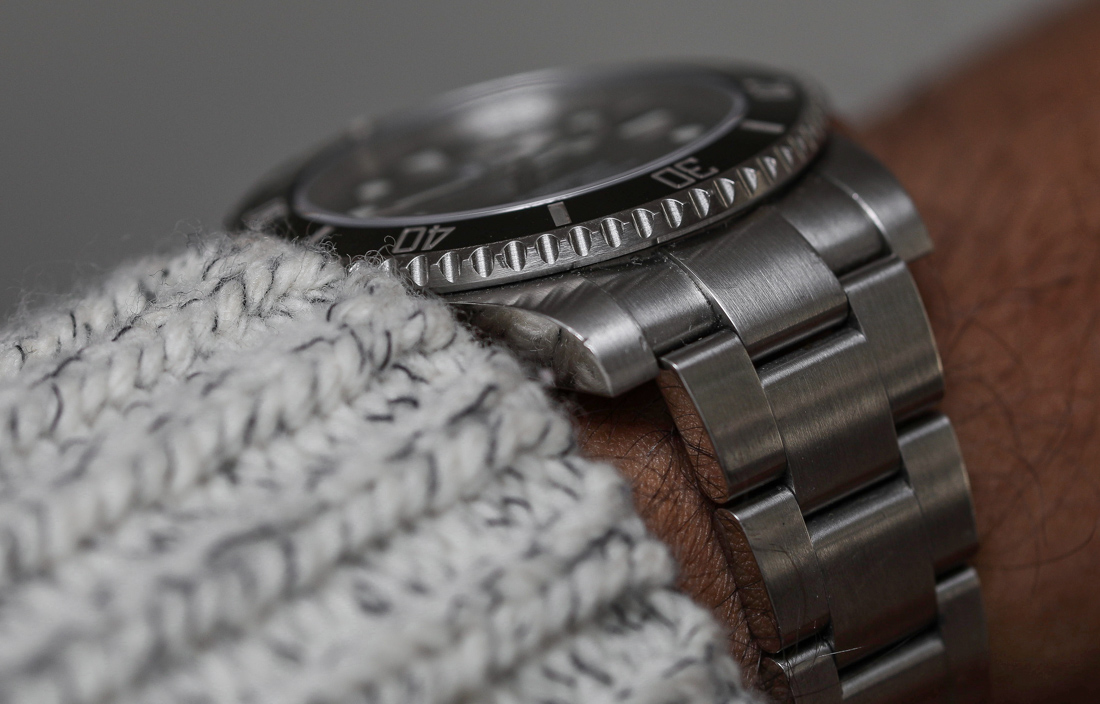
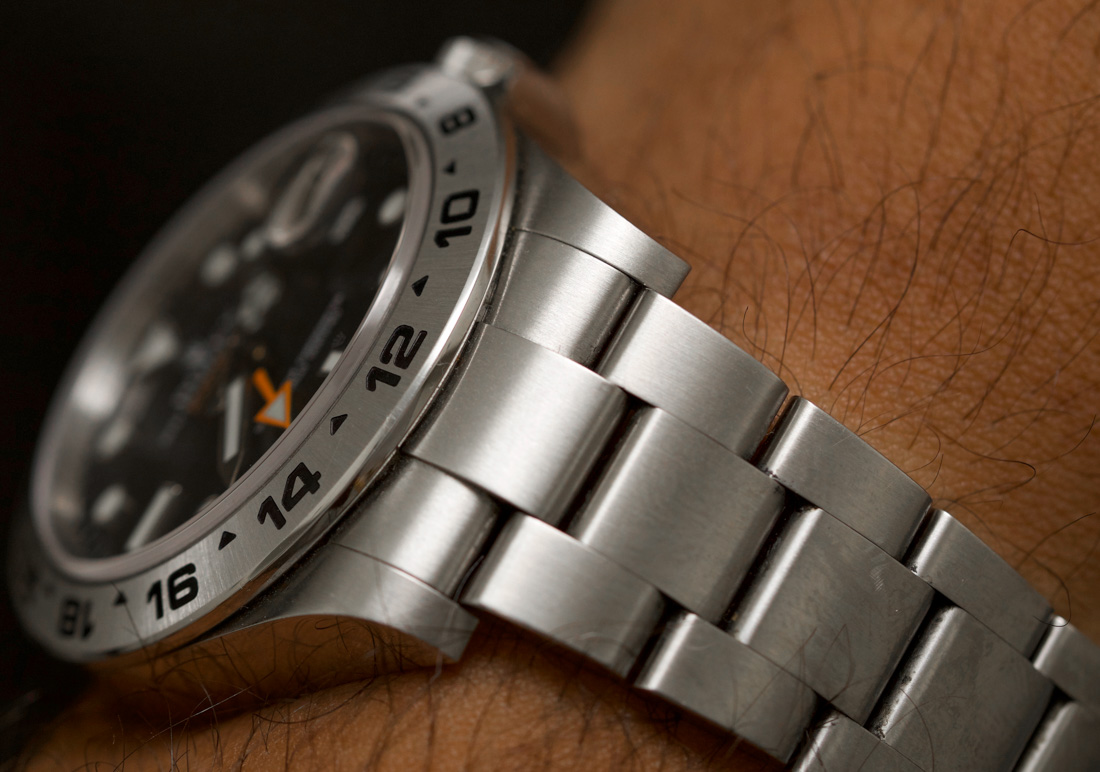
Fortunately, neither are thick or clunky, which isn’t something that can be said for a watch like the Sea-Dweller, which is closer to 15.5mm thick. The Explorer II strikes the ideal balance for those who find 40mm too small but don’t want that kind of thickness that comes with super-deep divers like the aforementioned Sea-Dweller.
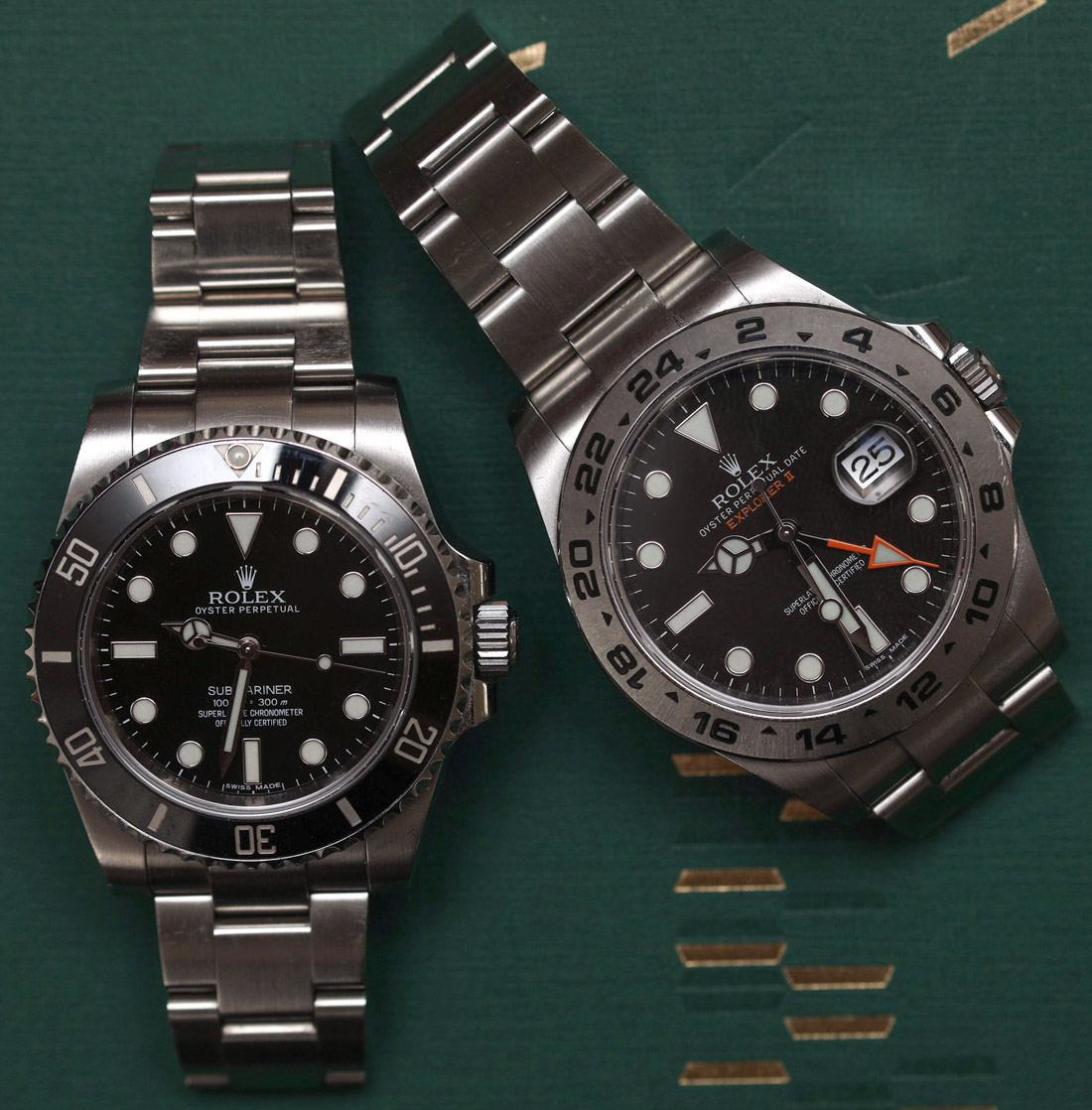
Rolex Submariner & Rolex Explorer II Dial, Hands, & Legibility
This where I find the Explorer II to shine. Allow me to quote David here when he aptly wrote:
The design of the Rolex Submariner’s hands is among the all-time iconic greats – about two years ago, we featured it in our article where we discussed the importance of good watch hand design here. The funny thing is that, although the hands are super legible and work wonderfully with what is called a “Maxi dial” and its larger, bolder indices, they actually are about 5% smaller than they ideally should be.
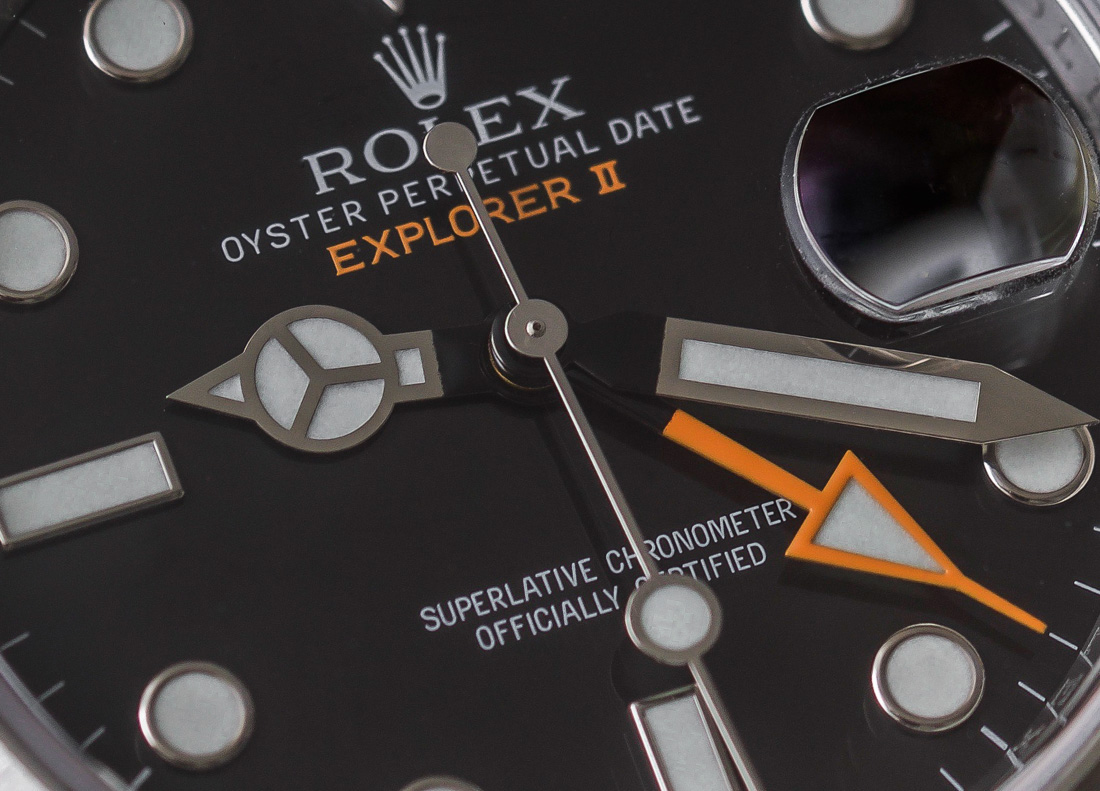
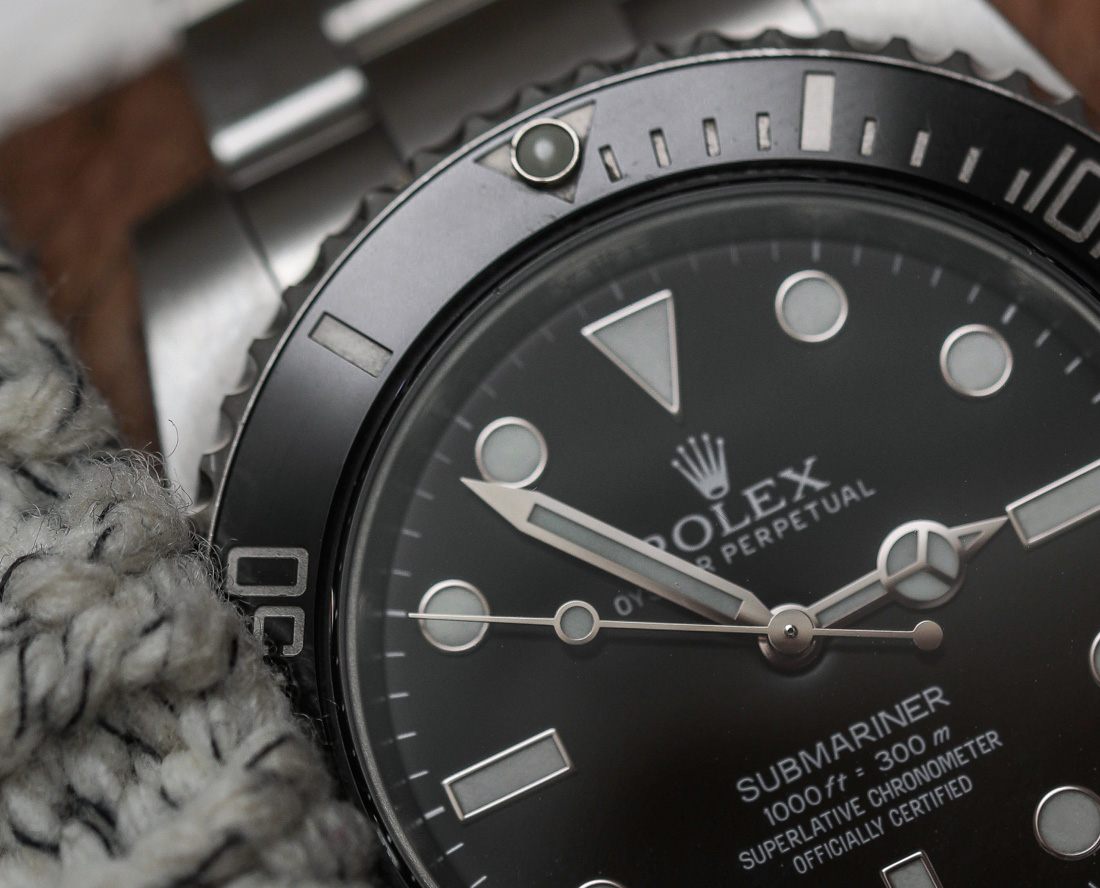
The Explorer II simply has larger and more legible hands, with a larger dial to work with. This was, in fact, the deciding factor for me when choosing between the two watches. I simply prefer the larger dial and bigger iconic Maxi dial aesthetic on the Explorer II. For those who are total legibility nerds, the white “polar” dial Explorer II has hands outlined in black paint as opposed to 18k white gold, which makes them pop out even more.
We can’t discuss the Explorer II without mention of that vibrant orange 24-hour hand that the eye is immediately drawn to. Large, legible, and distinct, it makes a complication I might not always use into something that I keep track of anytime I look at the watch. The orange hand is complemented with the similarly colored text reading “Explorer II.” Finally, I am so happy to see only 2 lines of text at 6 o’clock on the Explorer II as opposed to the fat stack of 4 lines of text on the Submariner.
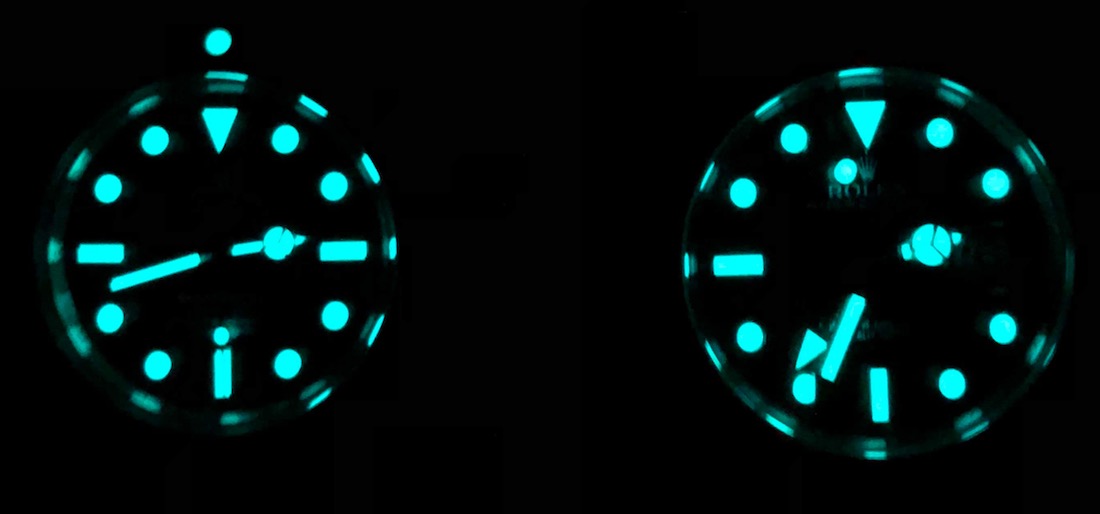
As far as lume is concerned, both watches use Rolex’s Chromalight on the hands, markers, and indices. Both are bright and basically perform at exactly the same level with the consistency that you’d expect from Rolex. Finally, I am going to make the date window a moot point here unless having one is a complete deal breaker for you. If not, the Submariner is available with a date window for those who prefer the often-derided but incredibly helpful complication.

